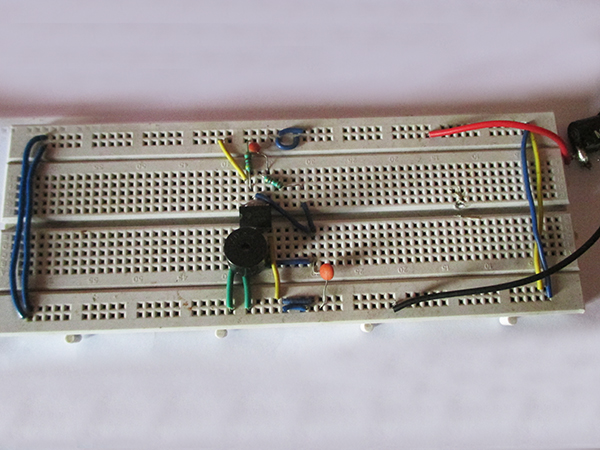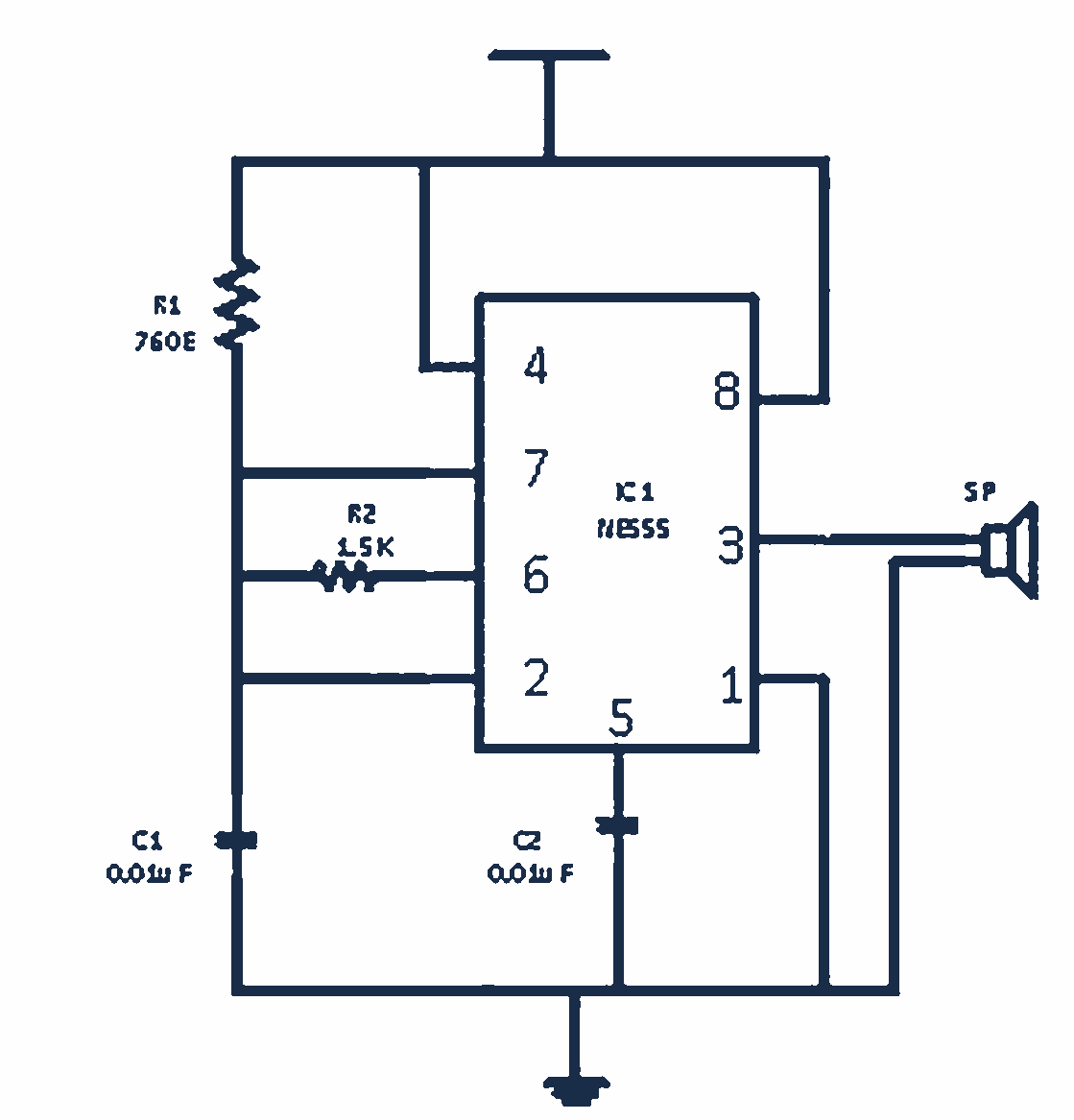This circuit is very much easy to understand and use. A circuit with minimum components repel mosquito Large number of things like coils, creams, oils is
available in the market to repel mosquito. At the same time all these replant is also harmful for the humans too. Oils and creams can led to skin disease, while coils or mats produces toxic fumes which can lead to breathing problem. While in this circuit there is no harm for human being as it produces frequency which human being can not hear. Mosquito repellent generates a frequency ranges from 20-38 KHz. And mosquito runs away from your house as they irritates from these range of frequency.

Fig. 1: Prototype of Electronic Mosquito Repellent Circuit on Breadboard
Human generations are able to hear frequency which has a range from 20Hz to 20 KHz. All the rest frequency above this is considered as a ultrasonic frequency. Many animals and insects are able to hear this range of frequency. Usually in mosquitoes ultra sound is generated by the male ones and female one receives that one. While after breeding female mosquito mainly used to avoid this frequency. And this circuit produces the same frequency as the male one generates, and these creates a stress on the antennae of the mosquito and these keep them away.
Basic principal of this circuit is to connect a such type of buzzer which can produce ultrasonic frequency range. With the help of oscillator in the circuit, buzzer is driven. And in the circuit oscillation is generated by 555 timer which is linked as a astablemultivibrator.
The circuit is connected in the closed mode and thus power is received by the 555 timer. In the starting stage voltage in the capacitor is zero volts. So the voltage at the threshold `as well trigger pin is at zero volts. Now the capacitor starts charging via a resistor R1 and R2.There will be one point when the voltage of capacitor will be higher as compared to threshold voltage. At this stage capacitor starts discharging with the help of resistor R2, which is a discharging pin and it keeps of going downward till it reaches to its original state. Thus the signal at the output pin of IC will be an oscillating signal having 38 KHz frequency. With the help of pin 3 of IC which is out pin of IC 38 KHz frequency drives to 38 KHzpiezo buzzer. This buzzer will produce a ultrasound at a regular interval. By altering the value of resistor R2 we can alter the output frequency.
By changing the value of resistor and capacitor, it can also use as an insect replier as insects are also able to hear ultrasound.
From the source ultrasound are transportable only at 45 degree. So in the situation when there is any hurdles in the track signals get diverted. Also it works on the place where population of mosquito are not much more.
Component Description-
IC (IC1) NE555
Capacitor (C1, C2) 0.01uF
Resistor
R1 760E
R2 1.5K
PiezoBuzzer(B1) 38KHz
Circuit Diagrams
Project Components
Filed Under: Electronic Projects



Questions related to this article?
👉Ask and discuss on Electro-Tech-Online.com and EDAboard.com forums.
Tell Us What You Think!!
You must be logged in to post a comment.